The elegant, Victorian village of Knowlton is located in the heart of the Eastern Townships on the shores of Brome Lake and is known for its Loyalist history and British flavour, as well as for the quality and originality of its restaurants, boutiques and antique dealers.
This exceptional village was first settled in 1802; many of its first inhabitants being United Empire Loyalists from the New England states. Originally known as Coldbrook for the stream that runs through the centre of the village, Knowlton grew into a successful settlement. By 1855, the village had become the County Seat with the Honourable Paul Holland Knowlton as its first Warden.
Knowlton amalgamated with six neighbouring villages surrounding Brome Lake – Bondville, East Hill, Foster, Fulford, Iron Hill and West Brome – in 1971 to create the Town of Brome Lake. The Town now offers its citizens and visitors quality town services, exceptional community involvement and an unrivalled natural setting in which to enjoy the best life has to offer.
The Town’s natural and man-made beauty has been recognized several times on both regional and provincial levels as an entrant in the “Villes, Villages et Campagnes fleuris du Quebec” contest and the village of Knowlton itself is a member of the “Association des plus beaux villages du Quebec”.
Thanks to the energy, enthusiasm and vision of the forefathers of Knowlton, the village continues to thrive and has now become a favourite year ’round destination for discerning travellers.
VILLAGE CENTRE TOUR
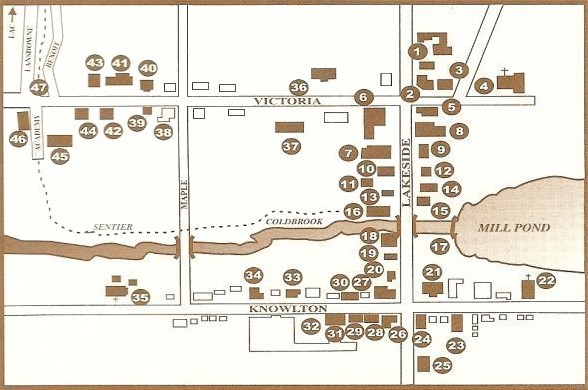
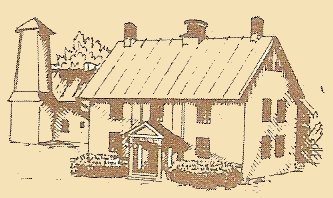
1 ~ The Museum comprises six buildings and is owned and operated by the Brome County Historical Society, which celebrated its centennial in 1997. The Museum houses treasures that recall the village’s Loyalist history, military artifacts and a rare First World War Fokker DVII plane. The Museum is open from mid-May through mid-September, seven days a week.
2 ~ Town Hall: Built in 1908 as the Post Office, this imposing building became the Town Hall in 1973.
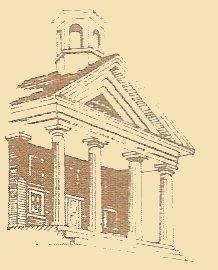
3 ~ The Old courthouse: Greek Revival architectural style. Built in 1859 as the county’s first Courthouse, Registry Office and County House. Sessions of the Court ceased in 1950. The building now belongs to the Brome County Historical Society, housing its archives and a replica of the original Courtroom which has been used as a movie set and is open to the public.
4 ~ St-Paul’s Anglican Church: While the congregation recently celebrated 150 years in Knowlton, this Gothic style church was built in 1941 after a fire destroyed the previous structure. Particularly interesting are the old stained glass windows that recall the village’s American forefathers and the historic Casavant organ.
5 ~ 110 Lakeside: Elegant clapboard building built in 1880 by Richard Lee Carter as his residence. Subsequently a doctor’s office, the building became commercial in 1960.
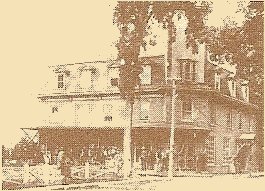
6 ~ 107 Lakeside: Originally known as the England Block. Built in 1850 by Hiram S. Foster as a general store, this imposing brick building and adjoining warehouse became the store of Israël England and Son in 1880 until 1911. Subsequently, it became the home of Southern Canada Power. The original tower (see photo) on the brick section was removed.
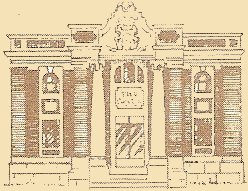
7 ~ 101 Lakeside: Originally a Molson’s Bank (note the Coat of Arms above the door), this exceptional structure was built in 1914. It became a Bank of Montreal in 1925.
8 ~ 104 Lakeside: Built in 1856 as a general store by Luke Knowlton. The interior tin ceiling is original. The Brouillette family operated the general store from 1919 until 1994.
9 ~ 100 Lakeside: Now a restaurant, this structure was built in 1850 by Paul Holland Knowlton to house British immigrants who came to work at Knowlton’s mill. Known for years as the “old tenement house”.
10 ~ 91 Lakeside: Located on the portion of Lakeside Road known as England Hill after the enterprising England brothers. Home of Rufus England, M.P.P. for Brome County from 1889-1892, and his family. Built in three stages between 1850 and 1892.
11 ~ 1892 Livery: Built by Rufus England as a commercial livery in 1892. He, however, placed the date as 1893 on the building to commemorate the birth of his daughter. The present owners received Honourable Mention from the Credit Foncier in 1986 for exceptional architectural renovation.
12 ~ 88 Lakeside: Originally two houses thought to be built by Albert Mills (also a mill owner) and first registered in the 1850s. An 1886 newspaper found under the floor (price: one cent) refers to a need to protect our east coast fisheries and to a huge American business scheme that defrauded the public of $615,000. Plus ça change …
13 ~ 79 Lakeside: Once a Masonic Lodge, this attractive fieldstone building was originally the home of Israël England. It was built in 1852.
14 ~ 78 Lakeside: The construction of this house predates others on the street. All walls are overlapping and are made, of 3 inch pine boards about 3 feet wide (no nails or studs). This makes a 6″ thick solid wood wall with lath and plaster over. The roof and beams are pegged together somewhat like an upside boat or ark. It was moved to its present site to house mill workers.
15 ~ 70 Lakeside: Home to Eratus Mills (circa 1840) who was the manager of the grist and saw mills. Known as “the Pearl Ash House”, the pearlashery was at the back of the home near the stonewall on the hill.
16 ~ 61 Lakeside: Originally a tannery built in 1843 by Israël England, a fire decimated the building in 1903, leaving only the stone foundation presently seen.
17 ~ Coldbrook Park and Mill Pond: Paul Holland Knowlton’s gristmill, built in 1836/37 was located by the spillway from Mill Pond into Cold Brook. The millstone seen in the Park was used to grind grain into flour.
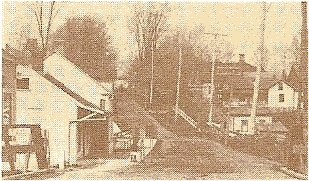
18 ~ 45 Lakeside: Built in the 1980s with attention to historical detail, this building is an excellent example of great architectural integrity. Located on what was once an island where Cold Brook split in two, it powered not only Knowlton’s gristmill but several others. The street was then known as Bridge Street after its two bridges.
19 ~ 37 Lakeside: Built in 1910 as the home and store of Kowlton’s premier photographer, James H. Russell.
20 ~ 17 Lakeside: Built in 1885, this historic building housed the H. F. Smith Printing Company from 1899 until 1943. In recent years, it has been known as the Partridge Building.
21 ~ Pettes Memorial Library: The Pettes Memorial Library was built in 1893 and opened in 1894 by Narcissa Pettes in memory of her husband, Nathaniel. It was the first free rural public library in Quebec.
22 ~ The United Church: Built in 1895 by the Methodists, it became the United Church in 1925, unifying the Methodists, Cungregationists and a large number of Presbyterians. In 1929, the large stained glass window was dedicated to Israël England.
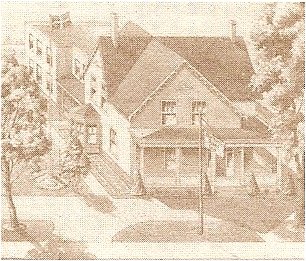
23 ~ 267 Knowlton: Long a famous ‘watering hole’ in the Eastern Townships, the Knowlton Pub (known for many years as the Bolton Pass Inn was originally the home of Nathaniel and Narcissa Pettes. Mr. Pettes was the M.P. for Brome County between 1874 and 1878. Built in 1857, it became the Bolton Pass Inn in the 1940s and the Pub in 1974.
24 ~ 281 Knowlton: Built as a general store in 1858 by Jeremiah Pettes, the building’s second floor served as a community centre in the early 1900s. The first silent movies in Knowlton were shown here at a ticket price of 25, 30 or 50 cents, depending on how special the show was. In 1943, the building was occupied by the H. F. Smith Printing Company, then owned by Ernest Page. Most of the original printing equipment was donated to the Museum when the company ceased operations in 1988.
25 ~ 19 Mont-Echo: The clapboard addition is a private residence that was constructed in 1880, using classic plank framing style. In order to preserve this house, it was moved in 2002 from Knowlton Road to its present location on Mont Echo and restored by the current owners.
26 ~ 285 Knowlton: This attractive fieldstone and wood structure was built around 1875 and was operated as a ground floor general store with living accommodation upstairs.
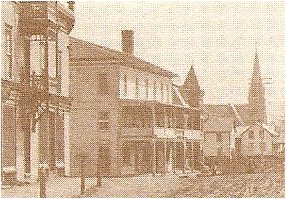
27 ~ 286 Knowlton: Built in 1849 and known as Blinn’s Inn, the building was the original stagecoach stop of the Old Magog Road Stage Coach Line going through Bolton Pass and the village’s first public establishment with accommodation, food and beverage. Auberge Knowlton is the oldest continuously operating hotel in the Eastern Townships. At the rear and left of the Auberge (yellow building) still exists the original blacksmith shop used by the stagecoaches on their passage through the Bolton Pass.
28 ~ 291 A & B Knowlton: Elegant clapboard building constructed in 1896 as a private home, it once housed the village tailor.
29 ~ 293-299 Knowlton: 1890 clapboard structure with balcony overlooking main street. Was once a plumber and tinsmith business operated by the Towell family.
30 ~ 302 Knowlton: The Guthrie Block (built in 1881) by William Gilmore and his son James, it has always housed both commercial space and residences.
31 ~ 305 Knowlton: Built in 1864 by George Robb. Fire destroyed the building in 1987 but it has since been rebuilt to near-perfect architectural likeness.
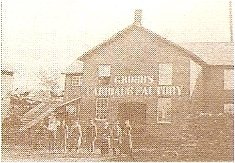
32 ~ Village Parking Lot: Robb’s Carriage Shop (1864) was located here and had a covered passageway on the second storey connecting to the Robb Block. The building was destroyed by fire in 1951.
33 ~ 316 Knowlton: Known as “Stillwaters”, this building was once the Weslayan Methodist Parsonage. Built in 1862, this attractive building now houses several professional offices.
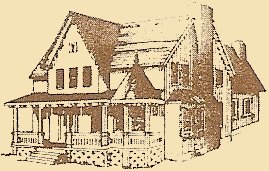
34 ~ 320 Knowlton: Former residence of Dr. Wm. H. Drummond, a practising doctor in Knowlton who was later renowned as a poet. The doctor lived in this house from 1885 to 1887. It was then sold to Jeremiah Pettes who transferred it to his son, Austin. The Pettes family lived here until 1959.
35 ~ St. Edouard’s Church: Built in 1868 and enlarged to its present size in 1898. The presbytery was built in 1905. As a result of the growing Roman Catholic population in the area, the summer chapel was built in 1963.
VICTORIA STREET TOUR
36 ~ 18-22 Victoria, Nestledown: Built in 1834 for Paul Holland Knowlton, Nestledown was originally located across the street. It was moved to this location in 1860. The tower was added in 1887 by the then-owner, Judge Samuel Willard Foster.
37 ~ 17 Victoria, Darley Place: This brick residence was built around 1860 by Paul Holland Knowlton for his niece and adopted daughter, Sarah Knowlton and her husband, Hiram Sewell Foster. The upper storeys have been removed.
38 ~ 39 Victoria, Barne’s General Store: This boomtown style building is not common to 1850 general stores in Brome Lake. Note the elegant wood paneling on the ceiling.
39 ~ 47 Victoria, Villa Maria: High Victorian style home built in 1897 for Ernest Fleury, a local notary who also served the Town for several years as Mayor. The home is still occupied by family members.
40 ~ 44 Victoria, 1981 Victorian House: The H.P. Smith Printing Company, founded in 1882, occupied this site until 1899 when it was sold to the Molson’s Bank. The Bank used the house as a branch office and manager’s residence. Lovingly restored, the building is now a residence and holistic centre.
41 ~ 50 Victoria, Auberge Lakeview Inn: Built in the early 1870s and called the Lake View House, the Inn has always been a favourite destination for visitors. Recently renovated to its former grandeur, it boasts an historic wall in the lobby.
42 ~ 49 Victoria, Knowlton Gallery: This Victorian mansion was build in 1880 and its Second Empire style is easily identifiable by its square tower, mansard roof and colums in pairs. It now house an art gallery.
43 ~ 58 Victoria, La Venise Verte B & B: A good example of the Victorian sub-style, Colonial Gothic, this charming house was built in 1884 of brick which was fired in a Dunham brick factory. It exhibits interesting detail in the double eaves brackets, chervron patterned lintels and a classic gothic trefoil window in the centre gable.
44 ~ 75 Victoria, Tudor House: This stately English Tudor style home was built during the First World War by Louis Pratt, who made his fortune selling wholesale meat to the army. A subsequent owner of the house was Hiram Sewell Foster III of New York, son of Thomas Knowlton Foster.
45 ~ 81 Victoria, Knowlton Academy: Built in the mid-1940s to replace the second Academy that was built in 1897 which was destroyed by fire. The original Academy (1854) still stands on the museum grounds.
46 ~ 8 Academy Lane, Williams Store: Built in 1872 as the general store run by John S. and H.E. Williams, merchants. In 1948, the building became the home of the Canadian arm of Clairol, run by Paige Thornton, whose ancestors include the Pettes family.
47 ~ Douglass Walking Path: Formerly the site of the Knowlton railway station, the line from Sutton Junction to Drummondville was completed in 1875 by the South Eastern Railway. The CPR operated it from 1887 to 1969. For many years, this railway brought affluent Montrealers to their summer homes in Knowlton.

